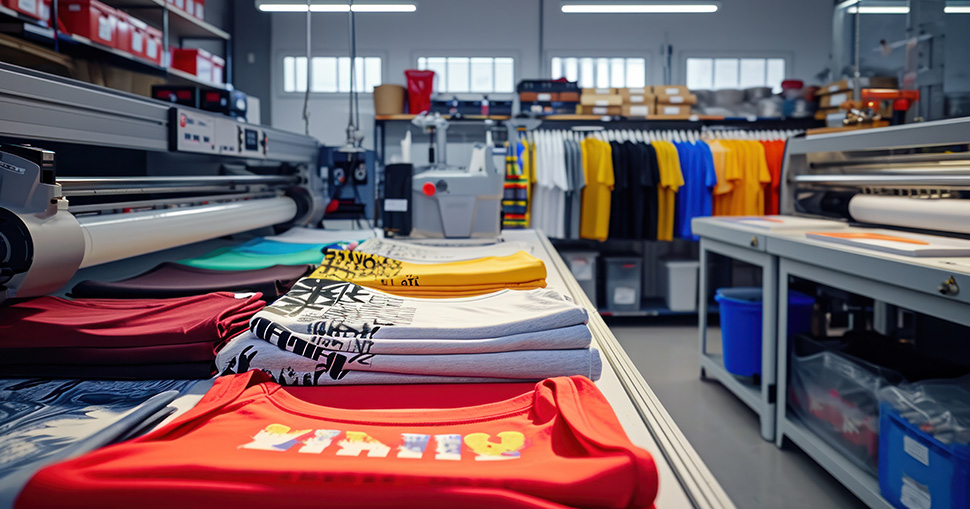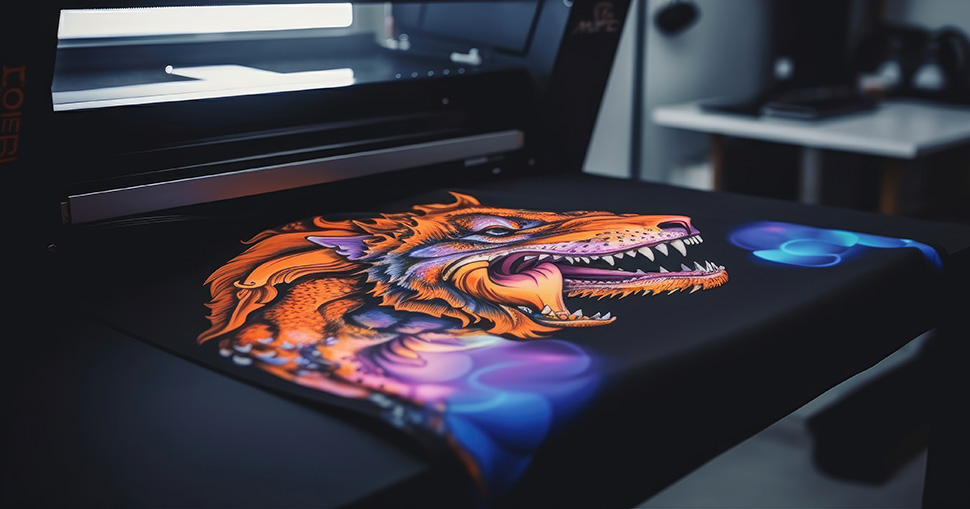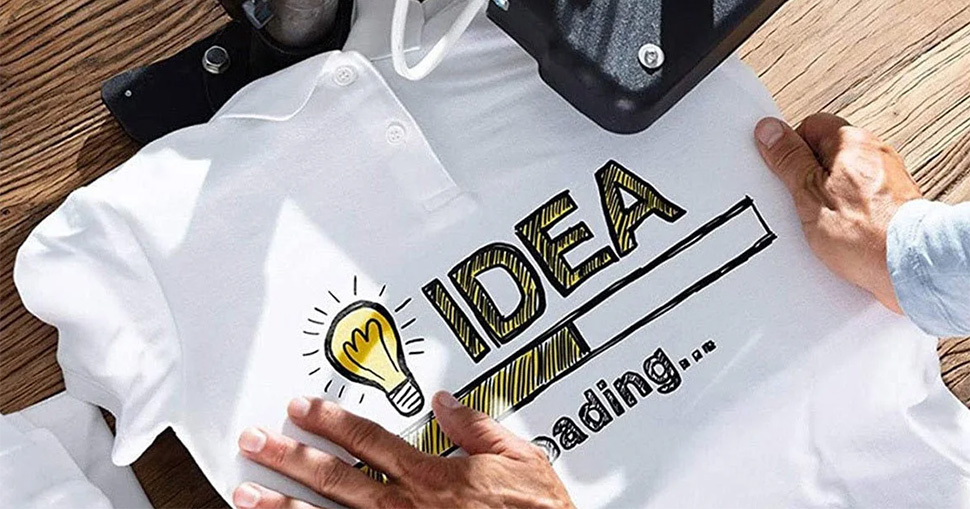From fast fashion to promotional goods, Direct-to-Film (DTF) printing offers unmatched versatility, creative freedom, and growing environmental responsibility. In an industry undergoing rapid transformation, DTF is redefining what’s possible in textile decoration—and why now is the time to take notice.
A Transformational Shift in Print Technology
DTF printing has grown from an emerging concept to a global phenomenon. With its ability to produce high-resolution, full-colour designs on almost any fabric—or even on hard surfaces—it’s fast becoming the method of choice for fashion labels, custom merchandise creators, and print-on-demand platforms. Unlike screen printing methods, DTF doesn’t rely on file separation, screen prep, pretreatment, or large minimum orders. This digital-first workflow makes small-batch, rapid-turnaround production more accessible, economical, and creatively flexible than ever.
The core process involves digitally printing a design using water-based inks onto PET film, then applying it to the chosen surface using a heat press. The method is remarkably versatile—applicable to cotton, polyester, spandex, leather, wood, glass, metal and many more. This broad material compatibility opens doors to new product categories and markets, from high-street fashion to industrial signage.

Powderless DTF: Cleaner, Faster, Smarter
One of the most significant developments in the evolution of DTF technology is the advent of powderless systems. Traditional DTF printing requires a powdered adhesive to be manually applied to the printed film and then cured before transfer. While effective, this step adds complexity, can create workplace mess, and raised concerns about dust and air quality.
Powderless DTF eliminates the need for adhesive powder entirely by digitally applying a heat-activated adhesive inline during the print process. The results can be cleaner, safer and more efficient operation. Print cycles are shortened, throughput can improve by as much as 20 percent, and the final transfers often exhibit sharper detail and a softer, more refined hand feel. These improvements are not just technical—they represent a significant leap forward in operational sustainability and worker wellbeing. This is still very much in the development phase but will soon be mainstream in operation.
Sustainability in a New Light
As the fashion and textile industries confront the challenges of climate change and consumer demand for accountability, DTF is earning recognition for being a sustainable alternative. Many systems now use recyclable PET films, and manufacturers are increasingly turning to plant-derived, water-based inks that are low in volatile organic compounds (VOCs). These inks not only produce vibrant, durable prints but also align with environmental standards and brand commitments to cleaner production.
Because the DTF process does not require screen preparation, water-intensive pretreatment, or high-heat ovens, it also reduces energy usage and material waste. Compared to traditional screen printing or even some entry level DTG, DTF typically consumes fewer resources across the production cycle—making it an increasingly eco-competitive solution.
Creative Freedom Meets Commercial Potential
Beyond its practical advantages, DTF is rapidly expanding the creative possibilities available to designers and printers. Further developments in film and ink layering technologies allow for high-build textures, raised graphics, and puff print effects that previously required analogue methods. These dimensional finishes bring added depth and tactile interest to garments, transforming them into wearable artworks.
Hot-peel films, now widely available, eliminate the need to let transfers cool before peeling—further streamlining workflows and increasing productivity. Meanwhile, wide-format DTF printers are enabling large-scale transfers for items such as banners, tote bags, and even industrial wraps. These innovations support both bespoke one-off pieces and scalable mid-size production runs, making DTF suitable for a wide spectrum of business models.
Application Versatility Across Sectors
The true power of DTF lies in its ability to adapt across diverse materials and industries. It performs just as reliably on soft cotton T-shirts as it does on sportswear, stretch fabrics, leather, or synthetic blends. Promotional product decorators are using it on wood, glass, ceramics, and even metal, expanding its utility far beyond apparel.
In fashion, DTF is enabling limited-edition streetwear drops, personalised athleisure, and hybrid couture designs that integrate multiple textiles in a single piece. For promotional products, it offers a fast, flexible way to deliver full-colour branding on demand. And in the performance-wear space, its stretch compatibility ensures durability without compromising comfort or design.

Market Momentum and Industry Growth
The global momentum behind DTF is undeniable. The market was valued at approximately USD 5.66 billion in 2023 and is projected to reach USD 14.8 billion by 2032, with a compound annual growth rate of 11 percent. White-ink DTF output—crucial for producing high-opacity transfers on dark garments—is forecast to rise from 1.9 billion square metres in 2022 to 10 billion by 2027.
Growth is being driven by widespread demand for customisation, faster production cycles, and environmentally responsible solutions. While China and India currently lead in printer installations, the UK, Europe, and North America are quickly expanding adoption for on-demand fashion, personalised products, and small-run manufacturing. DTF printer installations now number in the hundreds of thousands globally, spanning compact desktop systems to industrial production lines.
How DTF Compares to Other Methods
DTF doesn’t seek to replace DTG or screen printing entirely—it complements them by filling a unique niche. Compared to DTG, DTF offers broader substrate compatibility, especially on synthetics and blends. While DTG remains superior for ultra-soft prints on cotton, DTF delivers greater durability and visual impact across materials.
Screen printing continues to dominate in high-volume production, especially where specialty inks or traditional techniques are required. But DTF eliminates the time-consuming setup associated with screens, making it ideal for short runs, custom drops, and frequent design changes. It merges the best of both digital and analogue—offering sharp resolution, fast turnaround, and lower waste.
Navigating the Limitations
No technology is without its caveats. Large, solid DTF prints may feel less breathable than those produced by DTG or screen printing, particularly on lightweight garments. In high-volume environments, manual film handling can become a bottleneck unless the process is automated. Additionally, high-quality PET films and powderless consumables may carry a higher upfront cost, requiring strategic investment and skilled operation.
DTF also demands careful calibration of heat, pressure, ink density, and surface compatibility. However, for businesses prepared to learn the nuances, the return on investment—both creatively and operationally—is significant.
A Strategic Advantage for Forward-Thinking Brands
For brands seeking speed, sustainability, and design agility, DTF represents a strategic advantage. It empowers teams to launch limited collections, experiment with bold effects, and print on mixed materials—all without sacrificing production efficiency. As consumer expectations continue to shift toward personalisation, ethical production, and rapid fulfilment, DTF offers a flexible solution aligned with the future of fashion and merchandise.
Conclusion: More Than a Method—A Movement
DTF is more than a technical upgrade; it reflects a broader cultural and industrial shift. It offers a pathway to cleaner production, broader design expression, and faster market response. With powderless workflows, sustainable materials, and innovations in film and ink systems, DTF is becoming a core component of the modern garment decoration toolkit.
Whether you’re a startup embracing personalisation or a legacy brand evolving your production line, adopting DTF today is a move towards a more versatile, creative, and sustainable tomorrow.
Your Trusted Print Partner
Snuggle continues to innovate, expanding capacity, improving turnaround, and prioritising customer success. With competitive trade pricing and unmatched support, Snuggle is more than a supplier—it’s a long-term partner in your business growth.
Snuggle DTF is now open for trade. Request your sample pack at sales@snuggle.co.uk, pricing details and platform access at https://snuggledtf.co.uk. Explore more at https://snuggle.co.uk.




